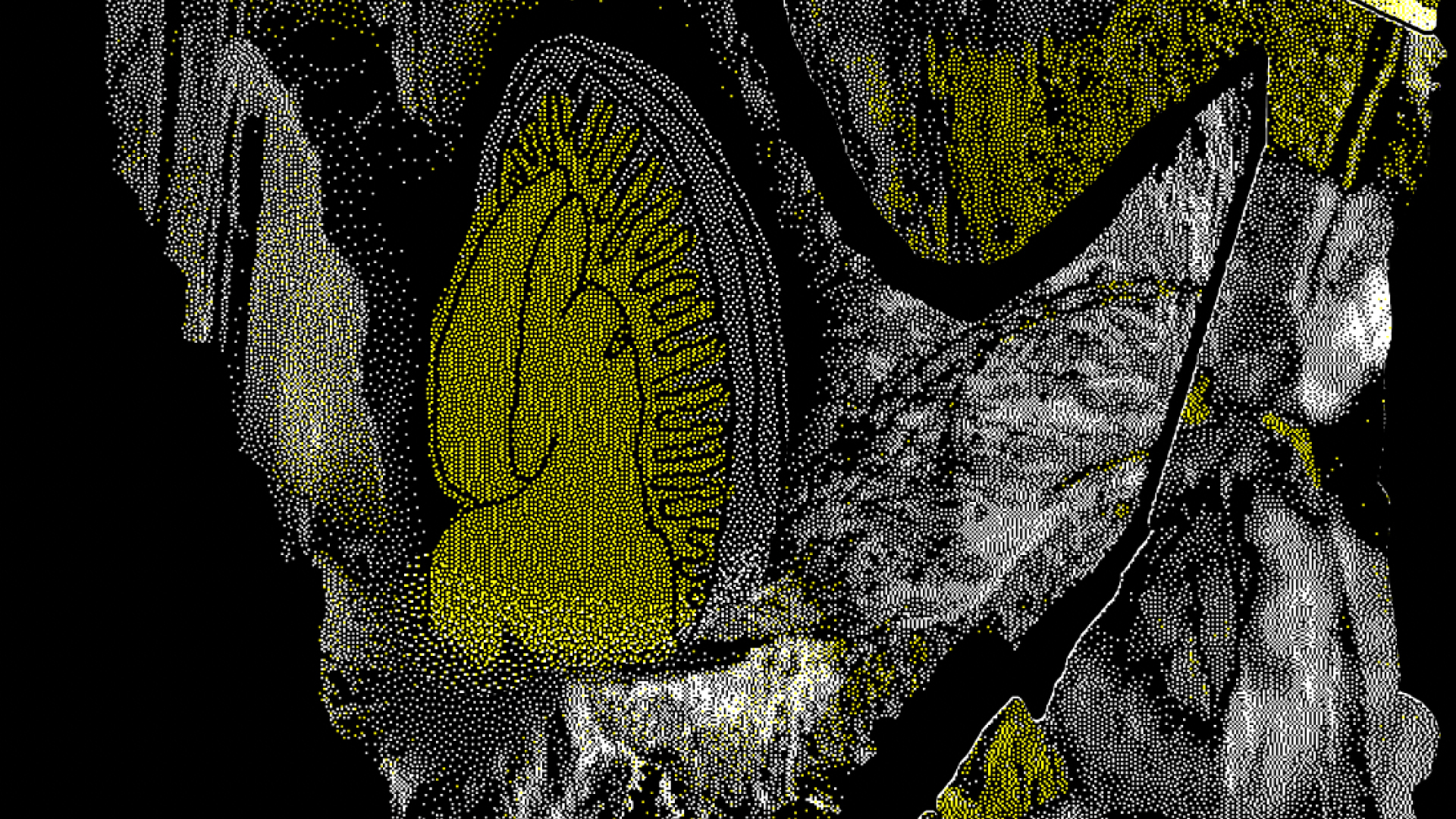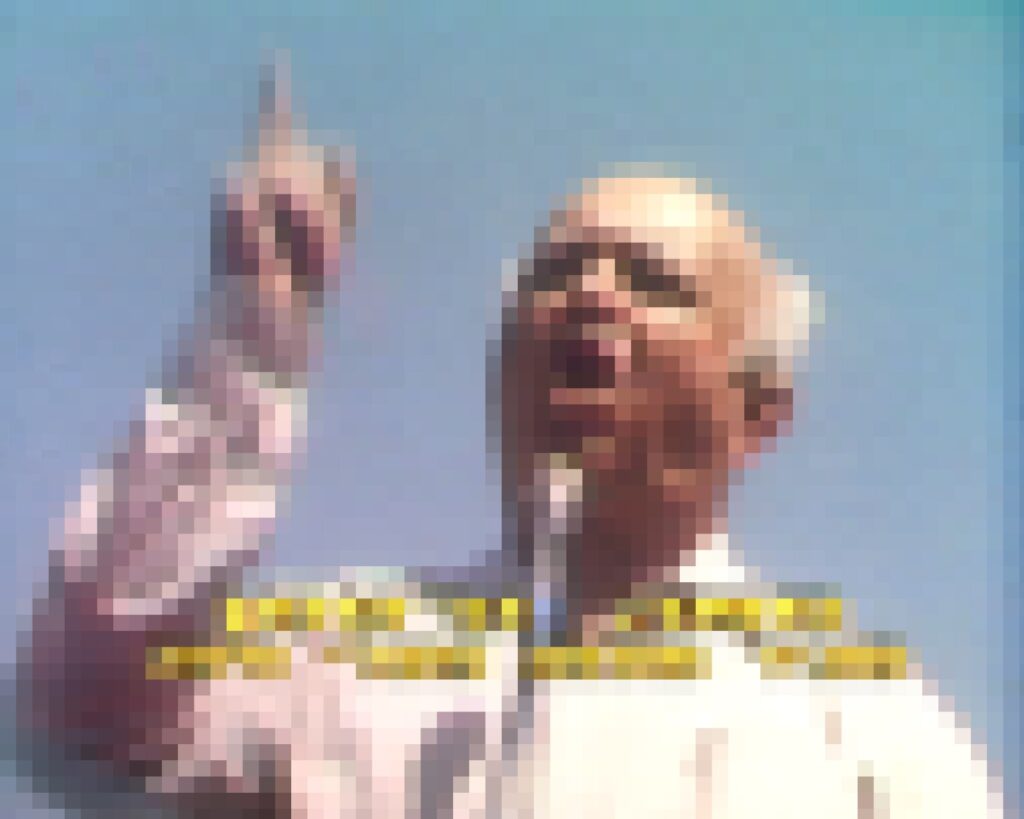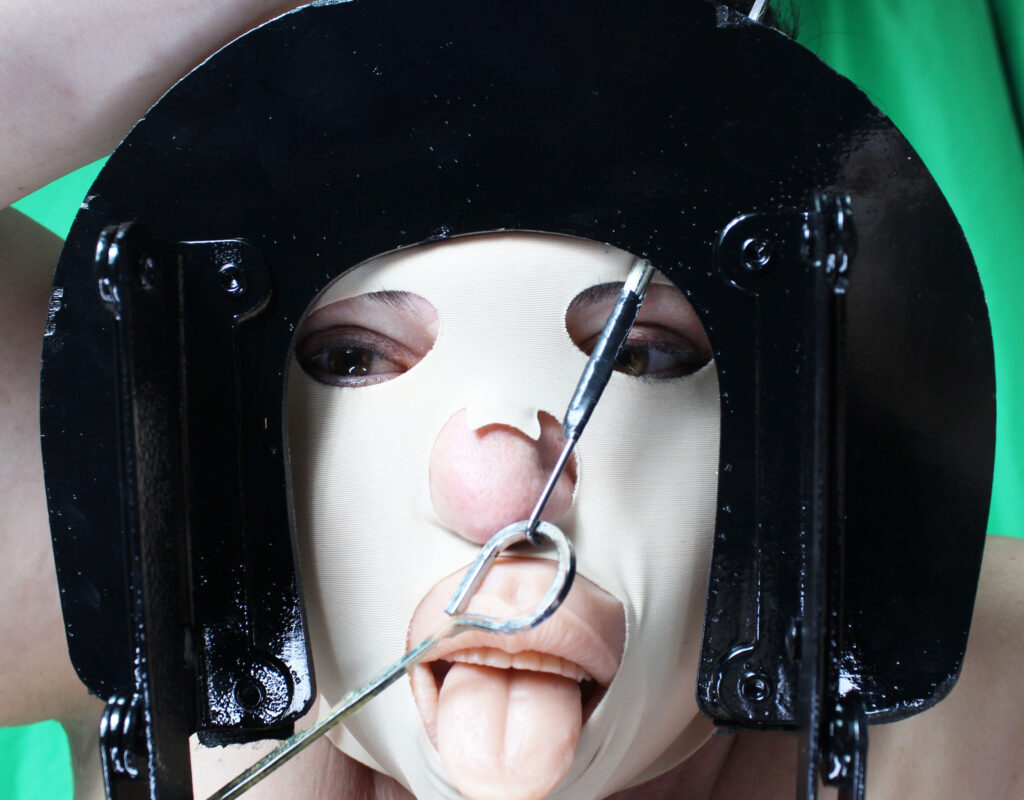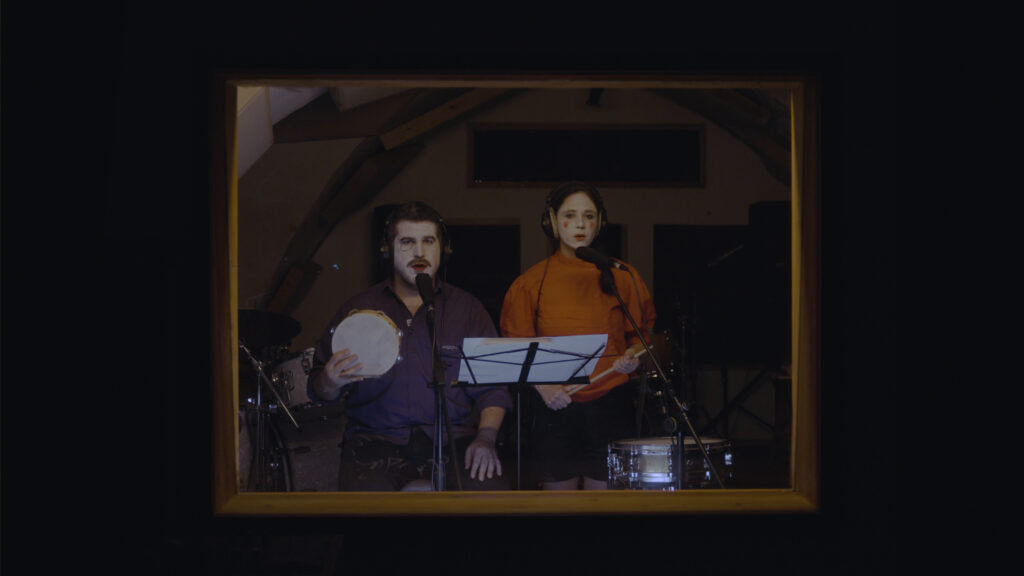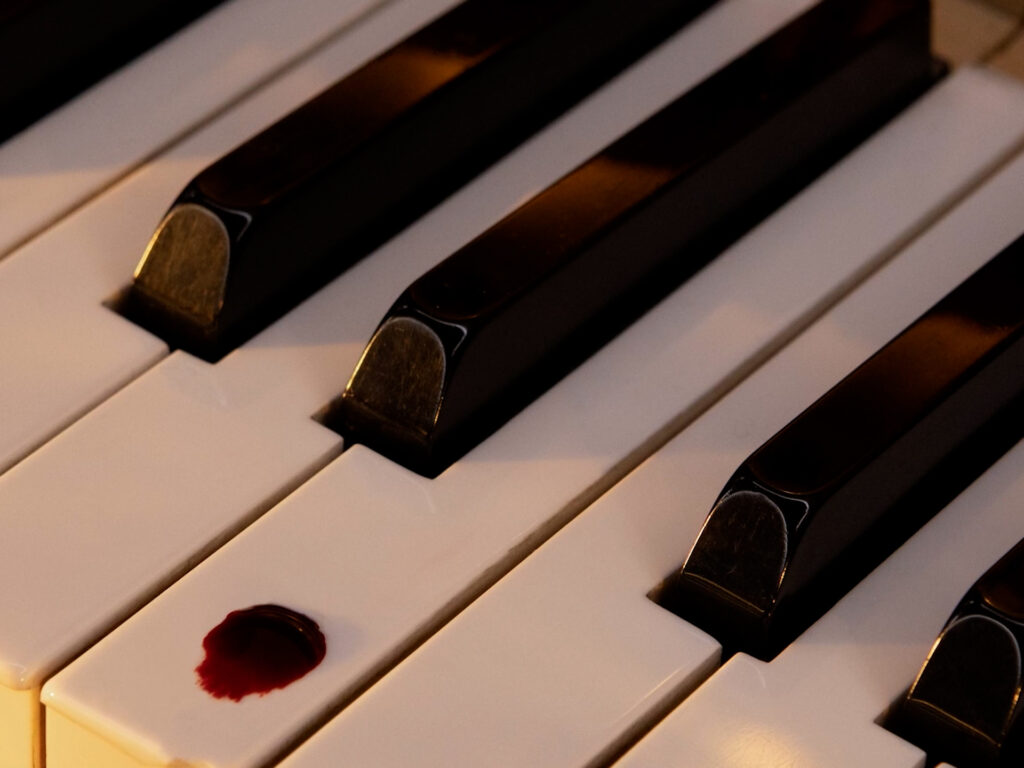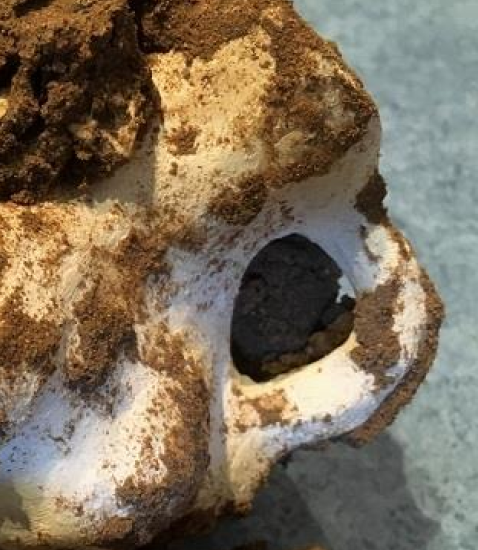Maintaining the Question
התערוכה לשהות עם השאלה ממפה אסטרטגיות חדשות של פעולה בתוך עולם משתנה תדיר. ההצעה המרכזית של התערוכה היא האפשרות הלא פשוטה לחיות בתוך הלא נודע, לשהות עם השאלה ולא לנסות לפתור, לעקוף או לנצח אותה — אי הסדר כאן כדי להישאר. כעת ניתן לייצר כלים או כיווני מחשבה חדשים שיעזרו לנו להיות נוכחים במציאות המעורערת ולחיות בתוך אי הוודאות. העבודות בתערוכה מקיימות סביבות הפעלה עבור הצופה במגוון מדיומים: וידאו, מיצב, רישום, סאונד ופיסול, ומחוללות מרחב פעיל של למידה והתבוננות. הצופה אינו פסיבי, אלא נמצא במצב של לימוד דרך הפרקטיקות השונות שעבודות האמנות מקיימות. זהו מרחב אנרגטי של שינוי המוצא את דרכו אל הצופה.
העבודה אמא אופיום היא פרי מחקר של האמנית שגית מזמר אודות התמכרויות לסמים בכלל ושימוש באופיאטים בפרט. מזמר התייחסה במחקרה לייצוגים מוקדמים של טקסי אופיום, ובמקביל קיימה במשך שנתיים שיחות עם מתמודדי התמכרויות לסמים אופיאטים. עבודת הווידיאו שבתערוכה מוקדשת למפגש אישי במרחב הביתי עם דני לוי, די.ג׳יי בעברו, שמתמודד עם התמכרות כבר יותר מ-20 שנה. בשנתיים האחרונות קיימה מזמר סדרת מפגשים עם לוי, ובהם סיפר על השימוש שלו באופיאטים ועל תהליך הגמילה העצמית שעשה בעזרת שורש צמח האיּבֹוגה, שהתגלה בשנות השישים במערב כמסייע לתהליכי גמילה קשים. השימוש בשורש האיבוגה החל בפולחני דת הּבְּוויטי שבאפריקה. אנשיה משתמשים בו למעלה מ- 1,500 שנים במסגרת טקסי ריפוי, בטקסים דתיים וכדי להחזיר לקהילה אנשים שהתנתקו ממנה בשל מצוקה נפשית או פיזית.
במיצב מוזיקה לפרפר נכחד 2 האמן איתן בן משה הניח מספר מזרנים מעוצבים על הרצפה, ולהם מחוברים מוביילים המייצרים צלילים. הצופה מוזמן לשכב על המזרן ולהיכנס למצב מדיטטיבי; להיות מופעל על ידי הסאונד, לנכוח ברגע ולנוח. ריפוי, עבודת הוידאו המוקדמת של מוטי מזרחי, מורכבת מסדרה של פעולות שנעשו על הגוף שלו ושל משתתפת נוספת, אשר מתפקדות כמדריך לריפוי הגוף החולה והכואב. מוטי מזרחי, האמן הבולט ביותר שעסק בריפוי שמאני בישראל של שנות ה-70, התמקד באופן אינטנסיבי בפצעים גופניים כסימן למתח שבין חיים ומוות, ובין רפואה ומחלה.
בעבודה של דנה ונציה, המרחב האמורפי של היכרות אינטימית, האמנית פועלת כגורו הפונה אל הצופה ומזמינה להיכנס למסע תודעתי משותף. דרך המסע הצופה מקבל כלים שבאמצעותם הוא נוכח בהווה — כלים להבנה של העולם המשתנה תדיר. זאת עבודה אינטימית שמיועדת לשני צופים במקביל לכל היותר, כדי לאפשר ריכוז ונוכחות. בעבודתה של פיי שפירו, כמה אהבה עוברת, הצופים מוזמנים להכניס את היד לתוך קופסה. במידה ויתקיים מגע עם יד של משתתף אחר — שיר יתחיל להתנגן. בתקופה שבה המגע הגופני לא מובן מאליו, האמנית מציעה לנו לחזור לבסיס של הקיום האנושי דרך מגע וקול. העבודה מבקשת מהצופה נוכחות מלאה. ללא המגע והקשר שיווצר לא נוכל לשמוע קול. היא דורשת מאיתנו להיות בקשר עם החיים ועם מי שנמצא מולנו.
גם עבודתו של גיא דוביוס, מדממ, מבקשת מהצופה להתערב ולהיות חלק משמעותי מהנוכחות הפרפורמטיבית שלה. יצירת הסאונד שמורכבת משלוש עבודות פרפורמנס שונות מהדהדת בחלל דרך קופסת קרטון ובה רדיו קטן שמשדר תחנות am. מיקרופון קולט את הסאונד של הנוכחים בחלל ומשדר אותו לרדיו. הצופה מוזמן לשחק עם הרדיו ולחפש תחנות. שילוב האלמנטים השונים מייצר חוויה של השהייה; רגע שבו אפשר להתחבר לעבודה לא באמצעות המחשבה והאינטלקט, אלא דרך הקול והרטטים השונים שנוצרים בחדר.
היצירה החתול של ברטוני של האמן קימ טייטלבאום עוסקת בסאונד של גרגור חתולים. זהו קול הטומן בחובו יכולות ריפוי — הוא מרגיע ומוריד את קצב פעימות הלב. האמן לבוש כחתול מתנועע לקצב הגרגור, ומגלם בגופו את האפשרות להתחבר לחיית הרוח שלנו.
עבודתו של דאגלס פולסון בואו נדבר, מבוססת על שיחות שהתקיימו עם תושבי ג’סי כהן, אשר התבקשו לענות על שאלות מוגדרות, ואז להציע שאלה פתוחה חדשה שהופנתה לאדם אחר. כך נוצרה שרשרת שאלות המעלה מחשבות על רוח התקופה הנוכחית, ועל מה שבאמת מעסיק אנשים היום. העבודה בפורמט של חוברת קומיקס מנכיחה את מצב השאלה התמידי שבו אנחנו נמצאים: על בסיס כל שאלה שנעתנה — שאלה חדשה נוצרה.
בעבודתו של מרקוס קואטס (אמן וצפר שחי בלונדון) The Plover’s Wing, הוא הציע את לראש העיר של חולון מוטי ששון, לתקשר עם עולם הרוחות ולעזור לו בשאלה שדורשת פתרון. התשובה לא מגיעה דרך ישיבות או סיעור מוחות מנהלי, אלא בחיבור אל רוחות העבר. בכך, האמן מציע תשובה פתוחה אשר יכולה להיתפס גם כשאלה בעצמה. ריקי אלקיים, בעבודתה בלדה לאישה מכינה מובייל העשוי מקרסטלים, שורשי צמחים, משי מפוסל, שלדי קיפוד ים ואלמנטים נוספים. העבודה מושפעת מתורת האנתרופוסופיה שעל פיה החומרים שמהם עשוי האובייקט מתקשרים ומובילים אנרגיה, ודרכם אנו יכולים להתחבר אל העולם שמעבר.
אוצר
מאיר טאטי
אמנים.ות
איתן בן משה, גיא דוביוס, דאגלס פולסון, דנה ונציה, מוטי מזרחי, מרקוס קואטס, פיי שפירו, קימ טייטלבאום, ריקי אלקיים, שגית מזמר
